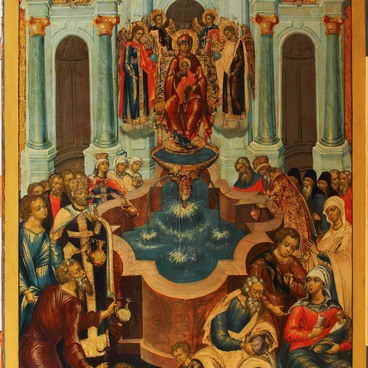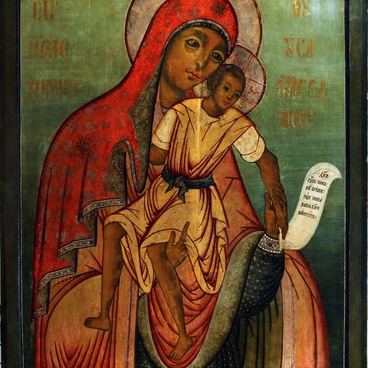The Holy Mother of Bogolyubsky icon belongs to the Agiosoritissa iconographic type. The name is derived from the Greek church of the Holy Urn, Agia Soros, where this image was first found. In the Greek tradition, it has one more name, Paraklesis (Advocate); in Russian, Intercessor. Such type of icons show the Holy Mother full-length, praying to Jesus. This topic is thought to be part of a composition, which is called deisis (obsecration) where the enthroned Jesus the Pantocrator on the day of the Last Judgement is approached by the Holy Mother and John the Baptist praying for forgiveness for mankind.
The very first Theotokos of Bogolyubovo icon was painted in the 12th century. According to legend, the Holy Mother appeared before Prince Andrew Bogolyubsky on his way from Vyshgorod to Zalesie. He founded a city in that place and asked icon painters to portray an image, which is a precise replica of the vision. For many centuries afterwards, artists would make copies in numerous variants (in Russian, izvods), i. e. extracanonical varieties.
The very first Theotokos of Bogolyubovo icon was painted in the 12th century. According to legend, the Holy Mother appeared before Prince Andrew Bogolyubsky on his way from Vyshgorod to Zalesie. He founded a city in that place and asked icon painters to portray an image, which is a precise replica of the vision. For many centuries afterwards, artists would make copies in numerous variants (in Russian, izvods), i. e. extracanonical varieties.

